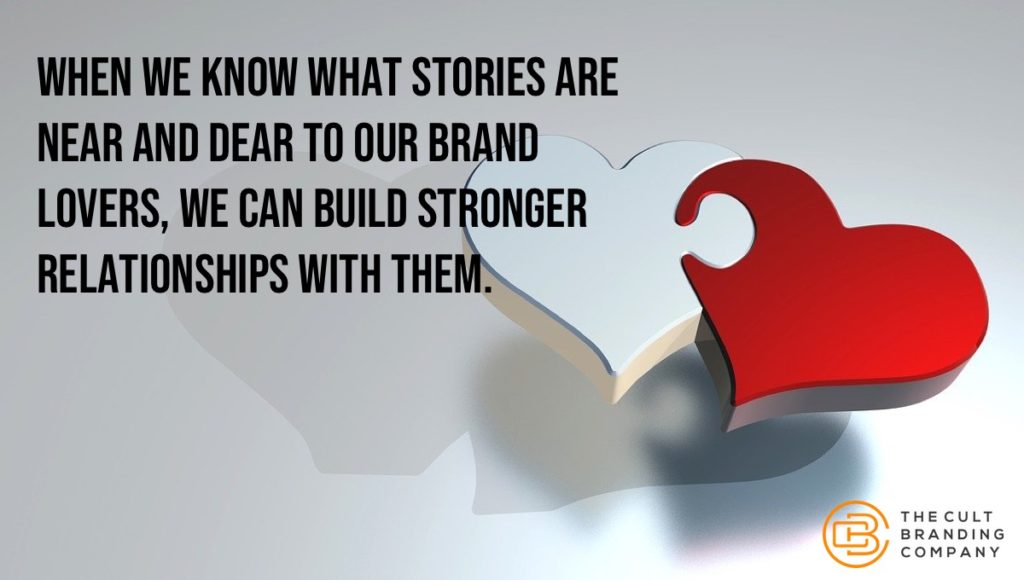
The hero starts out in an ordinary world before venturing into a special world.
He meets friend and foe. He undertakes quests. He faces challenges.
Winning a decisive victory—realizing his final goal—the hero returns from the adventure, transformed, bearing wisdom and new powers from his journey.
This hero’s quest is ancient. It can be observed in many religions including the stories of Gautama Buddha, Moses, and Jesus Christ. It’s also the formula for every modern epic adventure including Star Wars, Harry Potter, Lord of the Rings, and The Hobbit.
Why the Hero’s Journey Won’t Go Away
Why is the Hero’s Journey so powerful and pervasive in every culture? Why is this structure so effective in storytelling? And most importantly, how can it help you grow a stronger business?
When we engage in the story, our brains make us participants, not spectators.
The hero’s journey is ultimately about us. And we are fascinated with ourselves.
We identify with the hero, the protagonist, in the story.
The hero is a universal archetype that represents the ideal of child psychology. The hero’s journey is, ultimately, a journey of personal transformation of the adolescent psyche into mature adulthood. (Many modern films, however, don’t portray the completion of a hero’s quest. James Bond and Indiana Jones, for example, don’t ever change through the course of the story; they stay in child psychology from beginning to end.)
Each person, in fact, performs the lead role in a production of their own life story. And that includes both your customers and your employees (and you too).
The Primary Ingredient Behind Every Hero’s Journey
Your brand’s mission is to support your customers’ quests, to provide aid when needed.
To do this effectively, you need to know what fuels their story.
Compelling stories come down to one thing: problems.
The protagonist faces a problem and tries to overcome it. This is the essence of drama and the key to good storytelling.
Without problems, without troubles and tensions, there’s no story. There’s nothing to engage us.
The hero must face his problem, surmount his fear, resolve his tension. In so doing, he advances forward in his development toward greater competence and maturity.
Two Ways to Use Stories in Your Business
Brand messaging is the most common way to use stories in business. Advertisers use stories to communicate to customers on the subconscious level through emotions, images, and symbols.
The other use of story is far less known, but even more valuable when used appropriately. Instead of telling your customers your stories, try listening to theirs.
You’ll be amazed at what you can learn and discover.
Our personal stories are individual expressions of cultural narratives and universal themes of the collective unconscious of mankind. Our stories are part of what bind us together in the human family.
We each have our own stories to live and tell, some personal, others cultural.
These personal and cultural narratives are gateways into your customers’ psyches. When interpreted correctly, stories can be a powerful source of customer insights.
Your Hero-Customers Are Counting On You
The archetypal hero’s journey is hard-wired into your customers’ psyches. Learning how that story expresses itself in your customers’ lives provides powerful insights for better serving them.
All of your customers have stories. They are all in the process of becoming—starting at one point in space and time, looking to go to another, better place in the future.
You might be able to help them get there, but first you have to know where they are and what’s standing in the way of their transformation.
Businesses that help elevate their customers—that find ways to support their personal transformations in even a small way—hold a special place in the hearts and mind of their customers.
When we know what stories are near and dear to our Brand Lovers’—our best customers’—hearts and minds, we know what’s driving them. Then, we are better equipped to connect and build stronger relationships with them.
What are the stories that most influence your best customers?
